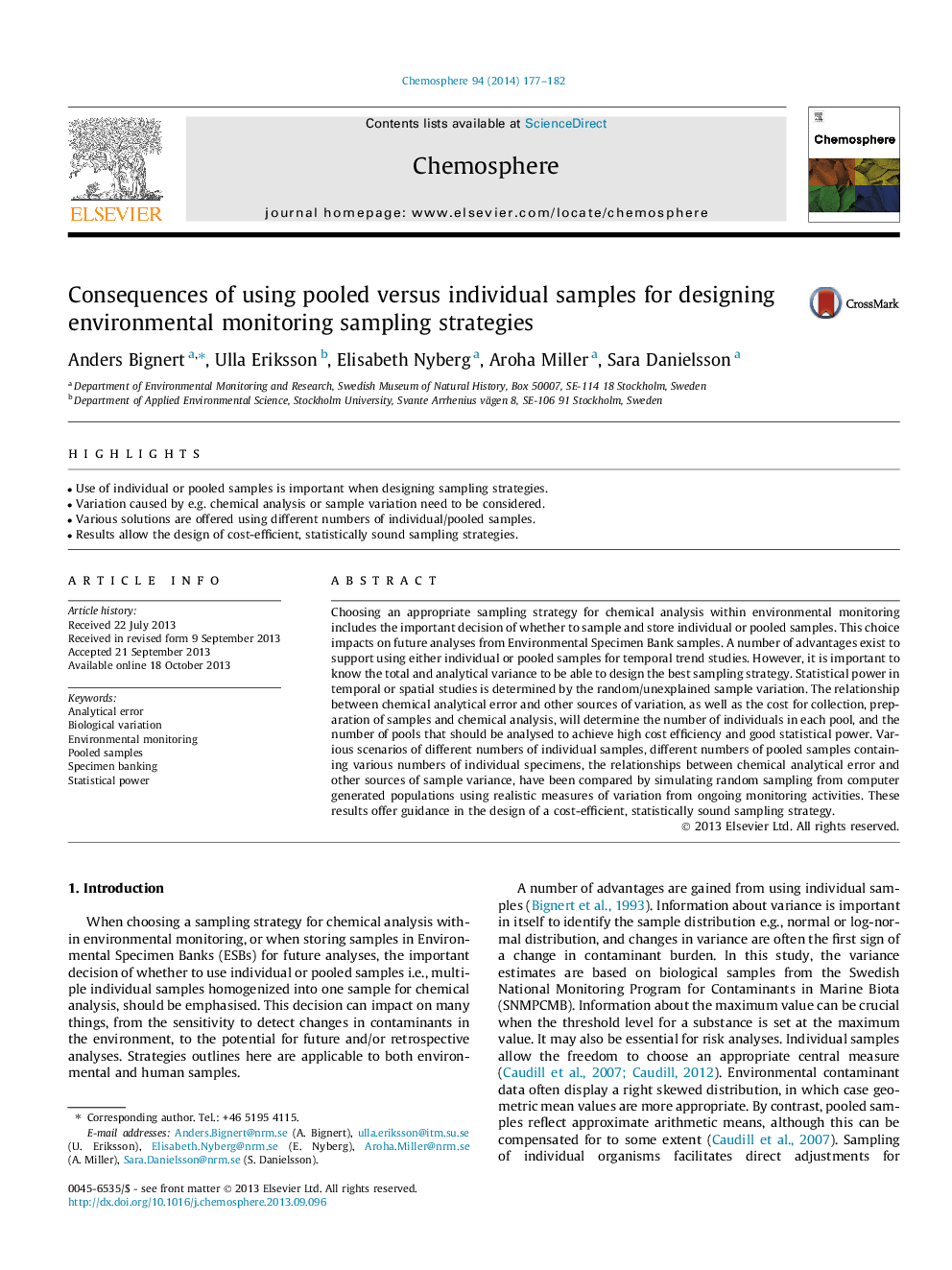| Article ID | Journal | Published Year | Pages | File Type |
|---|---|---|---|---|
| 6309983 | Chemosphere | 2014 | 6 Pages |
Abstract
Choosing an appropriate sampling strategy for chemical analysis within environmental monitoring includes the important decision of whether to sample and store individual or pooled samples. This choice impacts on future analyses from Environmental Specimen Bank samples. A number of advantages exist to support using either individual or pooled samples for temporal trend studies. However, it is important to know the total and analytical variance to be able to design the best sampling strategy. Statistical power in temporal or spatial studies is determined by the random/unexplained sample variation. The relationship between chemical analytical error and other sources of variation, as well as the cost for collection, preparation of samples and chemical analysis, will determine the number of individuals in each pool, and the number of pools that should be analysed to achieve high cost efficiency and good statistical power. Various scenarios of different numbers of individual samples, different numbers of pooled samples containing various numbers of individual specimens, the relationships between chemical analytical error and other sources of sample variance, have been compared by simulating random sampling from computer generated populations using realistic measures of variation from ongoing monitoring activities. These results offer guidance in the design of a cost-efficient, statistically sound sampling strategy.
Keywords
Related Topics
Life Sciences
Environmental Science
Environmental Chemistry
Authors
Anders Bignert, Ulla Eriksson, Elisabeth Nyberg, Aroha Miller, Sara Danielsson,
